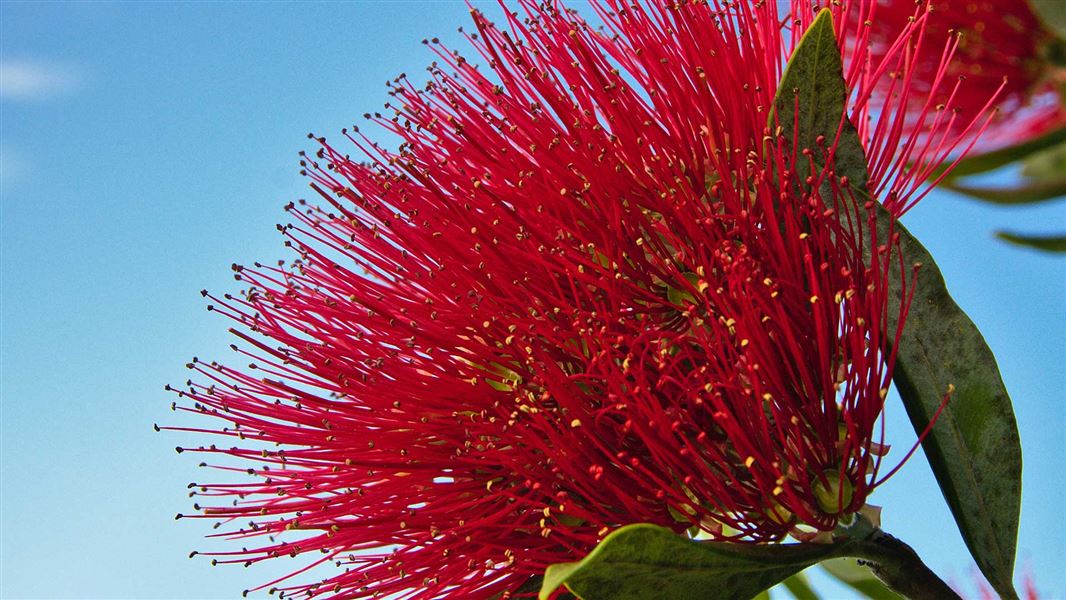You can find UrbanNature panels about rātā on Corrie Street near Queens Drive.
Southern rātā (Metrosideros umbellata) are long-lived trees in the Myrtle family, growing their gnarled trunks up to 15m high over hundreds of years. The rātā's bright red blooms attract many native birds, but it's not just the flowers that make rātā special.
Rātā were considered by many Māori to be a chiefly tree, and its bark, timber and root were used for an array of different purposes. The tough rātā roots were used by Ngāi Tahu to make fish hooks. The bark was used to create an antiseptic for cuts and wounds, while the heavy, dense wood was shaped into taiaha (flattened clubs) or paiaka (long spears). Shorter clubs fashioned from rātā's "ironwood" were used to hunt sea lions, seals and eels, or to pound in posts for lamprey- and eel-catchers.
Rātā are a preferred snack for hungry possums. You can help by setting up traps in your backyard, or participating in local predator control. As members of the Myrtle family, rātā are at risk of myrtle rust infection.
If you see signs of myrtle rust, don't touch. Call the MPI hotline: 0800 80 99 66.
Did you know?
Rātā makes a delicious bush honey.
